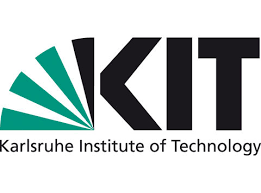Karlsruhe Institute of Technology: Climate research- More precise and efficient weather forecasts
Improving weather forecasts and at the same time reducing the computing effort in order to save costs and energy – these are the goals of the ASPIRE project. The meteorologist Dr. Julian Quinting from the Karlsruhe Institute of Technology (KIT) uses recurring signals in the tropical Pacific, which have an important influence on the atmospheric circulation in Europe. He also develops machine learning models that mimic the effects of high resolution. The young scientist has now received a Starting Grant from the European Research Council (ERC) for his project.
In view of the energy crisis and climate change, the importance of reliable weather forecasts for periods between two weeks and two months is growing. So it is important to know where the temperatures will be in four weeks in order to estimate the heating requirements for buildings and to fill up the gas storage accordingly. It is also important to predict extreme weather such as heat waves, droughts or floods as precisely as possible so that authorities and the public can take timely action to prevent or limit damage. Dr. Julian Quinting from the Institute for Meteorology and Climate Research – Department Tropospheric Research of the KIT in his new project ASPIRE (stands for:Advancing Subseasonal Predictions at Reduced Computational Effort ). The European Research Council (ERC) is funding the project with a starting grant.
Recurring patterns with high predictability
The award-winning young scientist and his future working group are not only concerned with improving the precision of the forecasts, but also with reducing the computational effort in order to lower costs and energy consumption and thus also reduce greenhouse gas emissions. “My basic idea is to make better use of sources in the atmospheric system with high intrinsic predictability,” explains Quinting. “Such sources are, for example, recurring patterns in the atmosphere that vary on a time scale of two weeks to two months.” The meteorologist considers recurring signals in the tropical Pacific, which have an important influence on the atmospheric circulation in Europe, to be particularly promising. However, these signals in the tropics are in numerical, This means that weather forecast models that work with concrete numbers are only reproduced incorrectly, so that their inherent predictability cannot be used. In ASPIRE, Quinting first intends to improve the representation of these signals through high spatial resolution of weather forecasts in the tropics. However, this high spatial resolution requires a large computational effort. Therefore, in a second step, Quinting and his working group are developing machine learning models that mimic the effects of high resolution. This makes it possible to reduce the amount of calculation. to improve the representation of these signals through high spatial resolution of weather forecasts in the tropics. However, this high spatial resolution requires a large computational effort. Therefore, in a second step, Quinting and his working group are developing machine learning models that mimic the effects of high resolution. This makes it possible to reduce the amount of calculation. to improve the representation of these signals through high spatial resolution of weather forecasts in the tropics. However, this high spatial resolution requires a large computational effort. Therefore, in a second step, Quinting and his working group are developing machine learning models that mimic the effects of high resolution. This makes it possible to reduce the amount of calculation.
New opportunities for weather services
“In ASPIRE, we want to show the potential of locally spatially high-resolution simulations,” says Quinting. “Ideally, weather services will be able to make even better use of existing computing capacities.” If the chosen approach proves successful, climate research could also apply it to other components of the atmospheric system that also have a high intrinsic predictability but have so far been incorrectly represented in weather forecast models.
ERC Starting Grants 2022
With Starting Grants, the ERC supports excellent young researchers who want to start an independent career and set up their own working group. Each selected project will be supported for up to five years with up to 1.5 million euros. Under certain conditions, up to one million euros can also be requested for equipment or access to infrastructure, for example. In the 2022 call for proposals, the European Research Council awarded Starting Grants to a total of 408 scientists conducting research in 26 European countries, 81 of them in Germany. The total funding volume of the ERC Starting Grants 2022 is 636 million euros. 2932 applications were received; the approval rate is around 13.9 percent.

